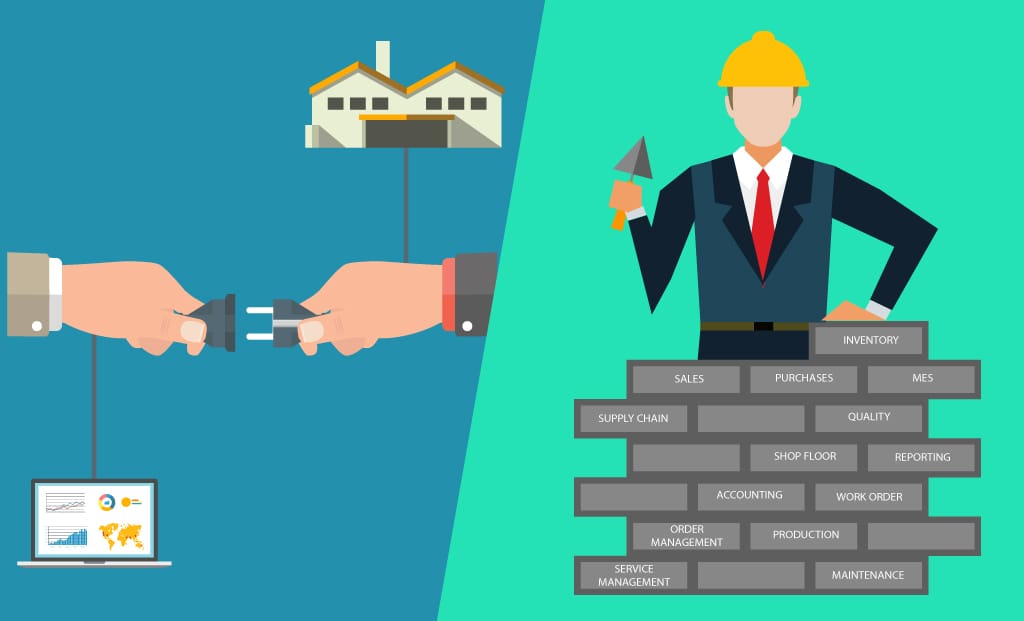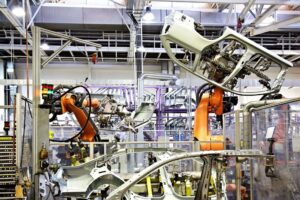As a manufacturer implementing an ERP software within your organization, you are often faced with a question, “Should I go for a ‘big bang’ approach or a phased implementation approach?” Both approaches depend on various factors such as,
- Size of the organization
- Number of Employees
- Number of Operating centres in various other regions/cities/countries
- Size of operations
- Number of businesses within the organization
- Industry type
- Complexity of business processes & workflows
- Infrastructure levels and readiness
- Employee competency levels
- Risk factor
- And much more
So which approach is the best for you? Let’s go through each approach in further detail.
One-Shot/Big Bang Approach
As the name suggests, each module of the ERP solution goes live throughout the organization in a single wave. Before the go-live, the ERP modules for each department are configured based on requirement, thoroughly run in test & real (controlled) environment, any corrections/changes are accommodated, and staff are trained and well-equipped.
The pre go-live preparations takes a considerable amount of time, sometimes even up to a year depending on the organization size and nature of business.
Pros
Less Implementation Time & Cost
Implementing an ERP at once takes far less amount of time compared to phased approach, even if you take into consideration, the implementation planning and pre go-live preparation. Therefore, the cost also gets reduced owing to less billing hours from the ERP vendor & consultants.
Suitable for Small organizations
If you are a small or medium sized manufacturer, then this approach suits you best as the time taken to implement the ERP in a smaller setup takes less time. Plus, every minute of business disruption means loss of business and profitability for your organization.
Quick Return on Investment (ROI)
The ROI is quick as your organization can start operations right after the ERP is implemented. The effect of the ERP can be seen immediately as information flow is streamlined leading to real-time visibility into orders, production, inventory, supply chain, logistics, customer service etc.
Cons
Disruptive
In order to implement an ERP all at once, Business as Usual (BAU) will have to be disrupted for a day or two leading to loss of revenue for the organization. For small and medium manufacturers who rely on make-to-order process, every customer order is critical.
Uncertainty
Despite having planned well and executed the implementation to perfection, there will be an air of uncertainty as to what will happen post implementation. There can be a lot of things that can occur and the process of reverting to the previous state is highly impossible as old data would have been converted to suit the new ERP, machines and other inter-connected systems would have been programmed to follow new workflows and old infrastructure would have been discontinued.
The risk is manifold as the disruption due to any implementation error will last for unplanned number of days leading to huge loss of production and subsequent revenue.
Not suitable for large organizations
This approach is not suitable for large organizations because of the sheer scale of implementation required. Large manufacturers consist of multiple divisions, warehouses, supply chains that needs to be connected with each other using complex network of systems. Considering the complexity of operations, processes and systems, a phased approach is more suitable for large manufacturing organizations.
Phased Implementation Approach
In a phased approach, the ERP is implemented step by step across departments, business units, subsidiaries and supply chains that span across countries and continents. Small and medium manufacturers cannot afford to go for a phased approach as the time taken to implement an ERP is considerably longer.
Pros
Less risk
Unlike one-shot approach where time is less and pressure is more to implement an ERP on a single attempt, the phased implementation can take its own time and efforts. The amount of planning and preparations that go into the implementation is big. Each system can be configured, tested and made to go live without any pressure as old systems also work in parallel and business disruptions cannot happen. Intermediate systems are in place to ensure that the information flow is uninterrupted during the transformational phase between the old and new systems.
In case of any failure, the backup systems are kept in place so that the manufacturer can revert to old systems and continue business operations.
Cons
Higher Cost
Costs escalate rapidly as the interaction with the ERP vendor and project team is longer. In addition, training costs, infrastructure changes and running parallel systems add to the budget.
Slower ROI
ROIs are definitely slow, as realizing the impact of the ERP for each department will happen only when it’s implemented completely throughout the organization.
Conclusion
There are other approaches such as Parallel Implementation and Hybrid Implementation that are used by manufacturers. Parallel implementations happen in a controlled test environment, where the results are compared with the existing system and made to go live only after the implementation reaches prescribed satisfaction results. Hybrid implementation is a combination of both phased and big bang approach. Typically used in large organizations, where big bang approach is used for smaller departments or business units and phased approach is used for bigger entities.
Finally, it is the manufacturer’s call to decide which approach suits best as they are well versed with their business processes, scale of operations, risk taking capacity, and budget. Latest ERP systems can be hosted on the cloud and plug-and-play third-party applications ensure that implementation is easier and time taken is less.
Download and Read our latest Whitepaper
‘An ERP Solution Provider’s Guide for Manufacturers’ that details every step right from ERP selection/evaluation till post implementation.






One Response
Just exploring your services